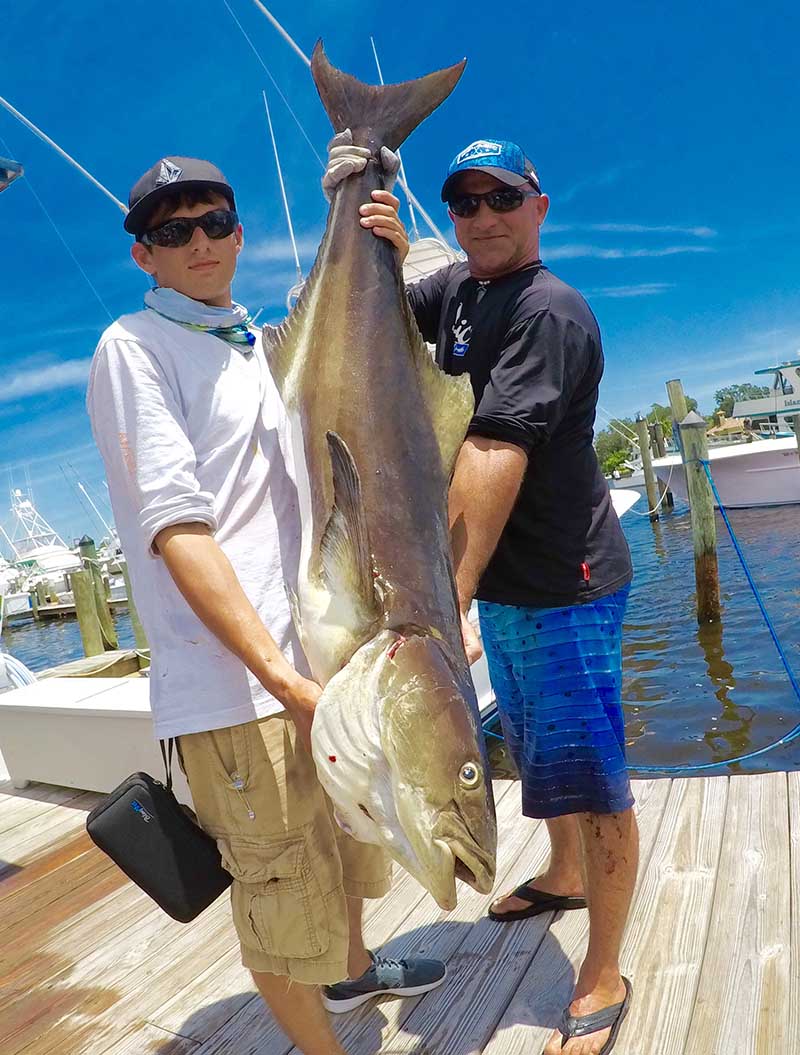
The days of February will frame an offshore picture of the Florida winter painted in the colors of the many species of snapper caught east of Martin County.
Anglers plying the offshore waters of the Treasure Coast this February will still need to watch and pay close attention the cold fronts of the Florida winter. These fronts are offshore weather makers and directly influence the daily sea conditions anglers will contend with in February. East of Stuart, these winter conditions will be firmly in place and as always, will necessitate that captains and their anglers find a suitable user-friendly weather window in which to venture out offshore to fish. And with the advent of the Internet, there are a multitude of virtual near-coastal reference points fishing crews can check on as they try to schedule an offshore trip.
Besides tuning in to local television weather reports, there are several go-to online forecasts and real-time reports that can be checked before ever launching or untying the boat, which will ultimately aid in the decision making. These include, but are not limited to: the NOAA Offshore Sea Conditions forecast for the near shore waters, East of the St. Lucie Inlet at http://1.usa.gov/1AjSteo; the NOAA Wave Height Buoy, which is positioned just east of Ft. Pierce, at http://1.usa.gov/1ymGv7i; the Jensen Beach webcam, which has multiple real-time cameras on area beaches and an anemometer, for wind speed and direction, at www.evsmartin.com; and the St. Lucie Inlet webcam, which gives a live photo of the mouth of the inlet, which is updated every ten minutes or so, at www.stlucieinlet.com. Also, an excellent reference page for offshore weather is WindFinder.com for the St. Lucie Inlet, https://www.windfinder.com/forecast/saint-lucie-inlet. Windfinder is based on the GFS Weather Model and can give anglers a ten-day look into a forecast future, thus enabling one to get a feel for when a potential user-friendly weather window might open up. These reference points can prove to be quite valuable during decision making of whether or not a particular day looks “fishable” or not, for your boat and crew.
Once a fishing window opens, cobia and snapper will become the preferred target species of near coastal reef fishermen. Schools of cobia will continue to stream through our reef zones in depths of 50 to 100 feet and will fall to dead and live baits deployed atop reefs, at all depths throughout the water column. Live baits, such as grunts, greenies and sardines, are some of a cobia`s favorite snacks, however a hungry “cobe” will eat just about anything it can fit in its expansive mouth. A 30- to 50-pound main line, with terminal tackle that consists of 50- to 80-pound leader, tied to a 5/0-7/0 hook, will get that cobia to the boat. Furthermore, members of the snapper family, which include lane, mangrove (grey), yellowtail, vermilion, cubera, and mutton, will be on the “most wanted list” for all bottom fishermen this month, especially since the closed season on all groupers will be in full effect. Reef structures in depths from 50 to 90 feet will hold most of these representatives of the snapper category and allow anglers to dial in their snapper catching strategies from offshore of the Loran Tower to the power plant, most notably large mutton snapper and jumbo cubera snapper will continue to post up, East and south of the inlet, on natural and artificial reefs this month, look for the big snappers in 50 to 80 feet of water, and deploy the baits for these bruisers on 40- to 60-foot leaders comprised of 80- to 125-pound test monofilament. Baits that are deployed on edges of the reef contour will yield the best results for success in whacking a jumbo snapper.
FORECAST BY: Capt. Rocky Carbia
Safari I
Pirates Cove Resort and Marina
4307 SE Bayview St. Port Salerno, Florida
Reservations: (772) 334-4411
www.Safari-1.com




